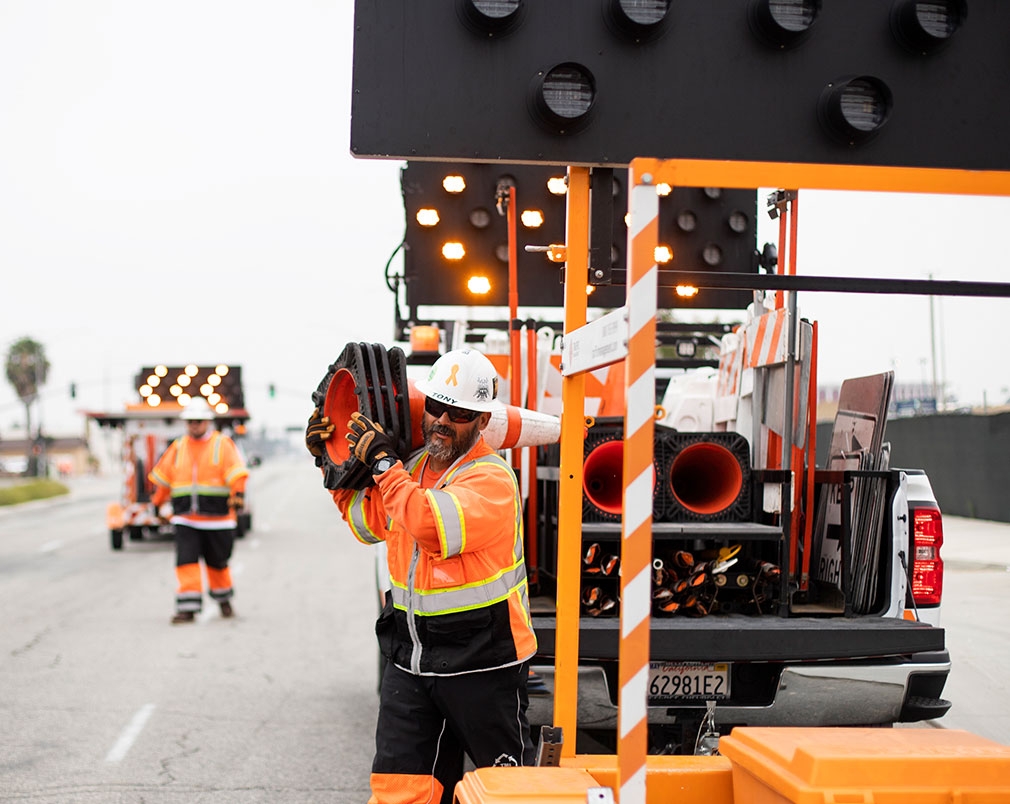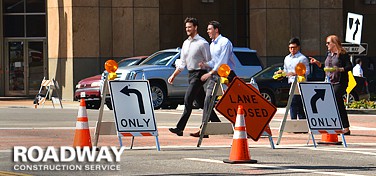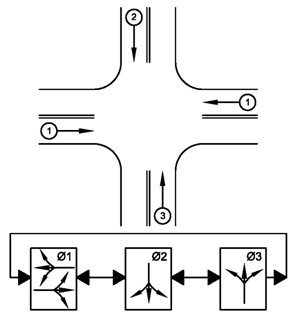Safety Network - The Facts
Wiki Article
The Only Guide to Safety Network
Table of Contents8 Simple Techniques For Safety Network4 Easy Facts About Safety Network DescribedExamine This Report on Safety Network4 Simple Techniques For Safety NetworkFacts About Safety Network RevealedA Biased View of Safety Network
Web traffic signal controllers alternating solution in between conflicting website traffic movements. This calls for assignment of environment-friendly time to one activity, then to another. If left turns have different controls, and also at complex crossways, there might be greater than two contrasting activities. The size of time required to complete one round of service for all conflicting activities is called the cycle size, and also the allotment of the cycle length between the contrasting website traffic motions is called the split.This is called squad progression and is accomplished by working with the operation of nearby signals (https://www.openlearning.com/u/gloriajohnson-rq6h0v/). Signal coordination is most commonly achieved by running nearby signals at the very same cycle length, with a pre-determined countered between the beginning of the cycle at one intersection and also the start of the cycle at the next.
The cycle size, split, as well as offset may require to transform throughout the day as website traffic quantities transform. Traffic control companies. Controllers, consequently, permit the user to establish numerous sets of these basic sychronisation timing criteria. Each such set is referred to as a timing plan or timing pattern, and one timing strategy or timing pattern functions at any kind of offered time.
Facts About Safety Network Uncovered
Web traffic signal controllers offered today can be classified as period controllers (also called pretimed) or stage controllers (additionally called activated). The former enable the user to split the cycle right into any variety of intervals, with the duration of each interval being set by the individual. The individual then defines which result circuits are turned on throughout which periods.The cycle size amounts to the amount of the interval periods, and also all periods are timed sequentially. The customer can likewise specify a start-of-cycle balanced out for signal control. The interval periods, outcome interpretations, cycle length, and counter can all be differed from one pattern to an additional, as well as therefore can be differed throughout the day.
If the signal is coordinated, the user also defines a split time for each stage, and also a start-of-cycle balanced out. The customer appoints a phase to a collection of compatible automobile and pedestrian activities. If coordinated, the split times for all stages in a ring must sum to the cycle length.
The 7-Minute Rule for Safety Network
Phases designated to the very same ring time sequentially, yet rings time simultaneously. Consequently, if the controller is making use of two rings, 2 stages can be timing simultaneously as well as independently. Stage controllers utilize barriers or phase concurrency groups to define problems between phases in various tings. Within a concurrency team (in between 2 obstacles) the phases in different rings can time individually, however all rings have to go across the obstacle (action to a different phase concurrency group) concurrently.From one pattern to the following, the user might vary the cycle length, offset, split, and phase series. Stage control is especially well fit to activated control of regular junctions, particularly those with safeguarded left turn motions. Two activated left turn phases on the very same street can time separately, with say the westbound turn phase obtaining much less time than the eastbound in one cycle, and the contrary happening in the following cycle.
Each phase in a stage controller can be operated either pretimed (fixed time) or activated. The National Electrical Manufacturers Association (NEMA) TS 2 conventional defines minimum useful requirements for both period as well as phase controllers. Most modern controllers meet most or my company all of these minimal requirements and also many controllers additionally offer added capability not yet standard.
Some Known Questions About Safety Network.
Such links might be long-term to a remote master or computer system, or short-term to a notebook computer used by field employees. Ethernet is increasingly being made use of as opposed to serial interactions. As special serial port might be made use of to communicate with in-cabinet tools in the case of a serial-bus cabinet (see NEMA TS 2 and ATC sections below).If a breakdown is discovered, the MMU automatically puts the signal in an all-red flashing state, overriding the outputs of the controller. Modern controllers can sense this problem as well as report the breakdown state to a master or main computer system. Modern controllers supply the complying with 3 alternative approaches of determining which pattern or strategy to operate: Internal time-of-day timetable - the customer sets up a routine that tells the controller when to change the pattern or strategy, based upon the day of the week and also time of the day.
If the controller loses communications with the resource of pattern commands, it can instantly return to using its interior time-of-day pattern choice timetable - https://www.bookmarkfeeds.com/author/s4fetynetw0rk/. The very same communications link is typically used to obtain condition information from the controller, and to enable remote changes to controller specifications. It is additionally feasible for the individual to by hand lock a controller right into a specific pattern, such that any of the above pattern choices is neglected.
The smart Trick of Safety Network That Nobody is Talking About



This is called time base sychronisation. Ultimately, however, the controller's clock will certainly wander and require to be reset to common time. Clocks can be reset utilizing any one of the following methods: Manual - regularly, a customer mosts likely to the controller in the area and resets the time according to a precisely established watch or other resource of common time (e.
The Only Guide for Safety Network
This technique is not favored as it is laborious, error-prone, and subject to forget. Depending on the design of controller, operationally substantial drift can call for manual reset after just a number of weeks of operation. Hardwire pulse - a master unit pulses a hardwire input to the controller at a pre-defined time of day.
Report this wiki page